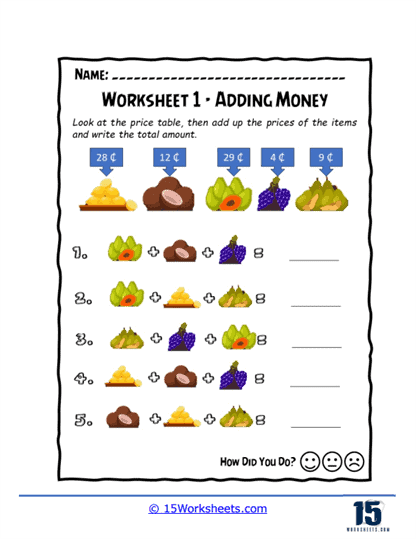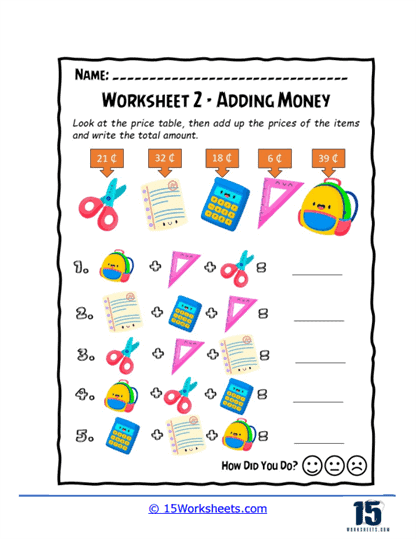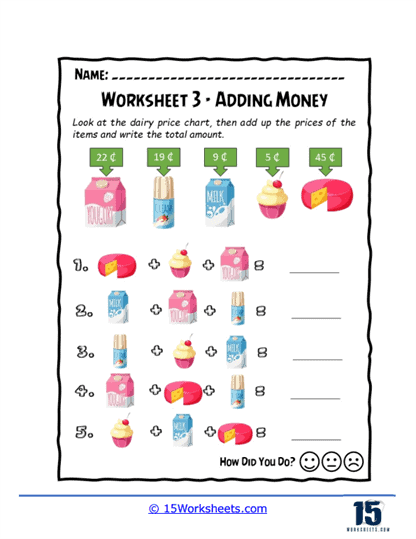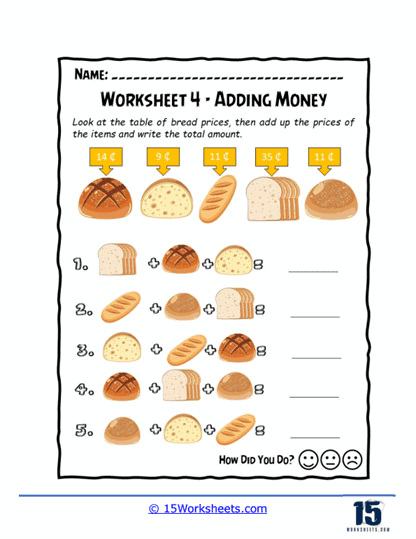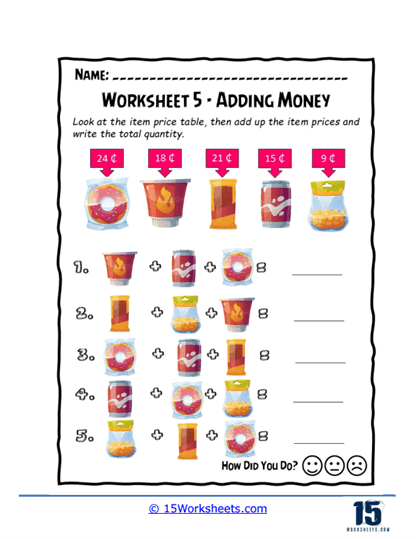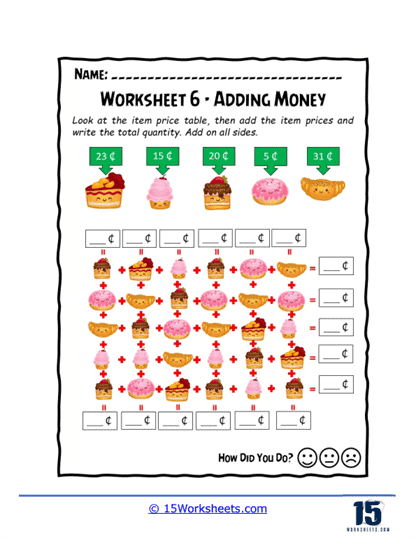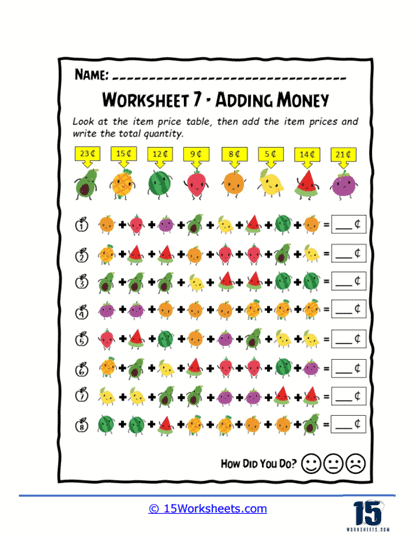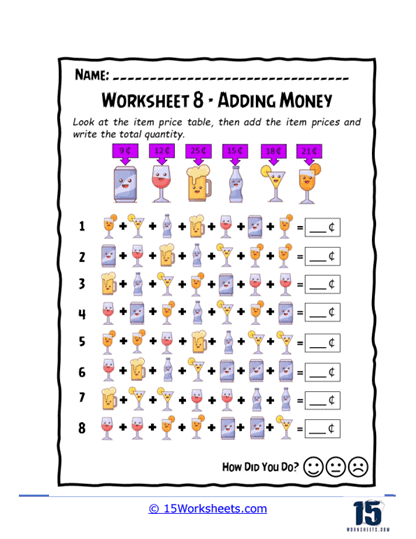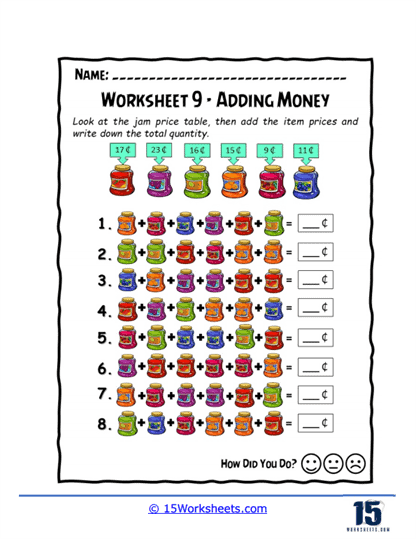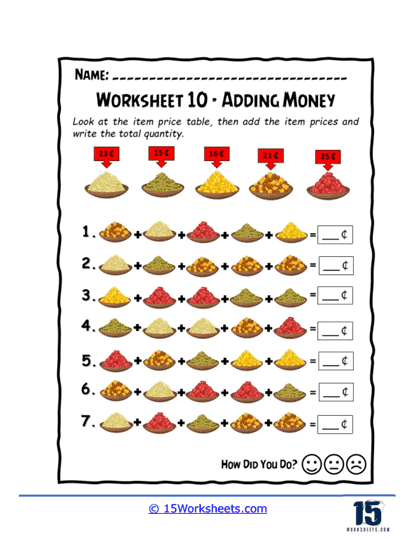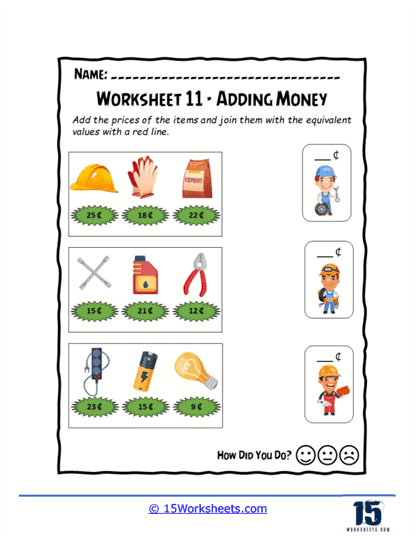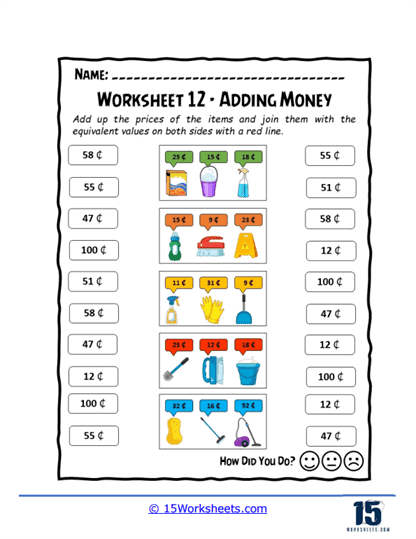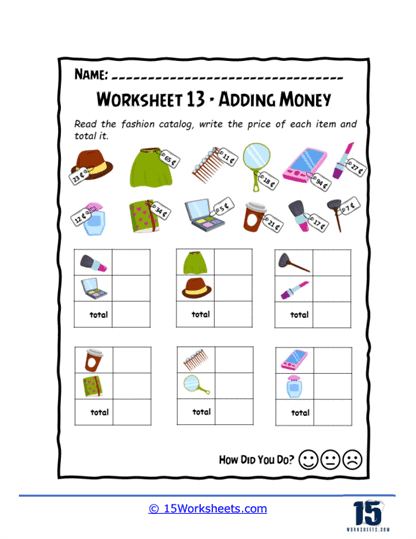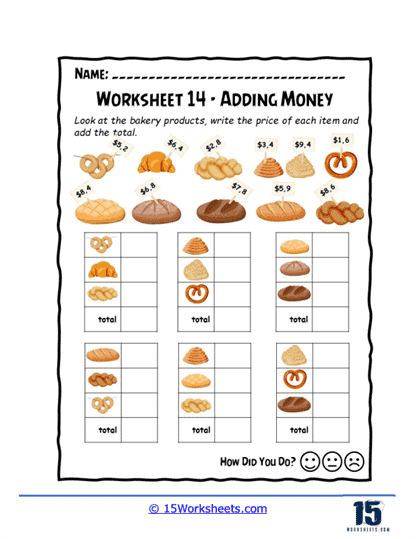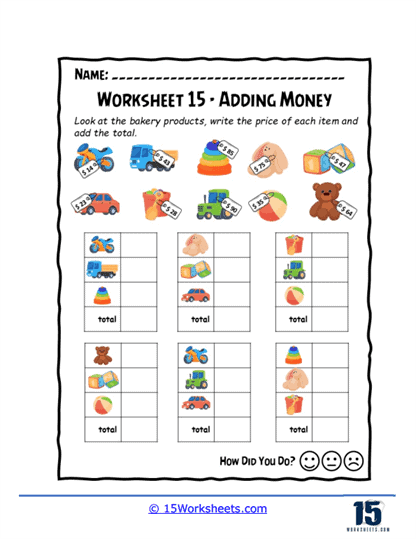Adding Money Worksheets
About These 15 Worksheets
Adding Money Worksheets are educational tools designed to improve a student’s arithmetic skills specifically related to handling money. These worksheets are varied in format but unified in their goal – to teach students how to correctly add different amounts of money. They are typically used in elementary and middle school settings to help students become familiar with the concept of currency, understand its value, and apply basic math operations like addition to real-world scenarios involving financial transactions.
Through varied exercises, they address different learning styles and difficulties, ensuring that all students have the opportunity to develop a comprehensive understanding of currency and its related mathematical operations. These worksheets lay the groundwork for a lifetime of financial literacy and competency in a world where money plays a critical role.
The types of exercises found on Adding Money Worksheets can be quite diverse. Here’s a breakdown of some common types:
Counting Coins and Bills – Students start with exercises that involve counting coins and bills to reach a total sum. This type of exercise might display images of coins and bills, and students are required to calculate the total monetary value. These are fundamental exercises that introduce students to the physical representation of money.
Writing Money in Words – Another exercise type focuses on writing the amounts in words. This helps students learn the written form of currency, which is crucial for writing checks or reading legal documents.
Column Addition Money Exercises – These worksheets present the student with rows of numbers that they must add up, similar to traditional math worksheets, but with a monetary twist. The goal is to practice carrying over values as one would when dealing with cents and transitioning to dollars. These exercises are designed to help students understand and add monetary values represented in decimal form, which is a crucial skill in handling money and understanding its division into dollars and cents.
Making Change – Some worksheets present scenarios where a certain amount is paid for an item costing less than the amount given, and students must determine the correct change. This exercise is practical and mimics real-life situations at stores or markets. More advanced worksheets may contain word problems that require students to read a short story or scenario and solve a problem by adding amounts of money. This not only practices addition but also reading comprehension and problem-solving skills.
Real-life Simulation Exercises – These worksheets might simulate situations like managing a budget, shopping with a certain amount of money, or even running a small business’s daily transactions. To make learning fun, some worksheets include crossword puzzles where the clues are amounts to be added, or matching games where students match a set of items with their prices to their total amount.
The Benefits of These Worksheets
Practicing with Adding Money Worksheets can significantly enhance a student’s understanding of basic currency and math skills in the following ways:
Understanding the Value of Money – Students learn to recognize the different values of coins and bills, which lays the groundwork for understanding how money works in the real world. By repeatedly adding various amounts, students reinforce their basic addition skills, and because money often involves decimals, they also get practice in more complex arithmetic operations.
Real-world Math Application – Adding Money Worksheets show students how math is not just an abstract concept but a practical tool they will use in everyday life, especially in financial transactions. Money calculations require precision. These worksheets foster meticulousness, as even a small error can lead to an incorrect total. This attention to detail is crucial in the real world where financial accuracy is paramount.
Financial Literacy – Early exposure to handling money through these worksheets can lead to better financial awareness and habits as students grow older. Word problems involving money require students to identify the relevant information, disregard the superfluous, and apply addition to find a solution. This enhances critical thinking and problem-solving abilities.
Confidence in Money Handling – As students become more adept at adding money and making change, their confidence in handling money increases. This confidence can make them more competent in managing their finances later in life. For students who will go on to study business, economics, or any field involving financial transactions, a solid foundation in adding and understanding money is indispensable.

